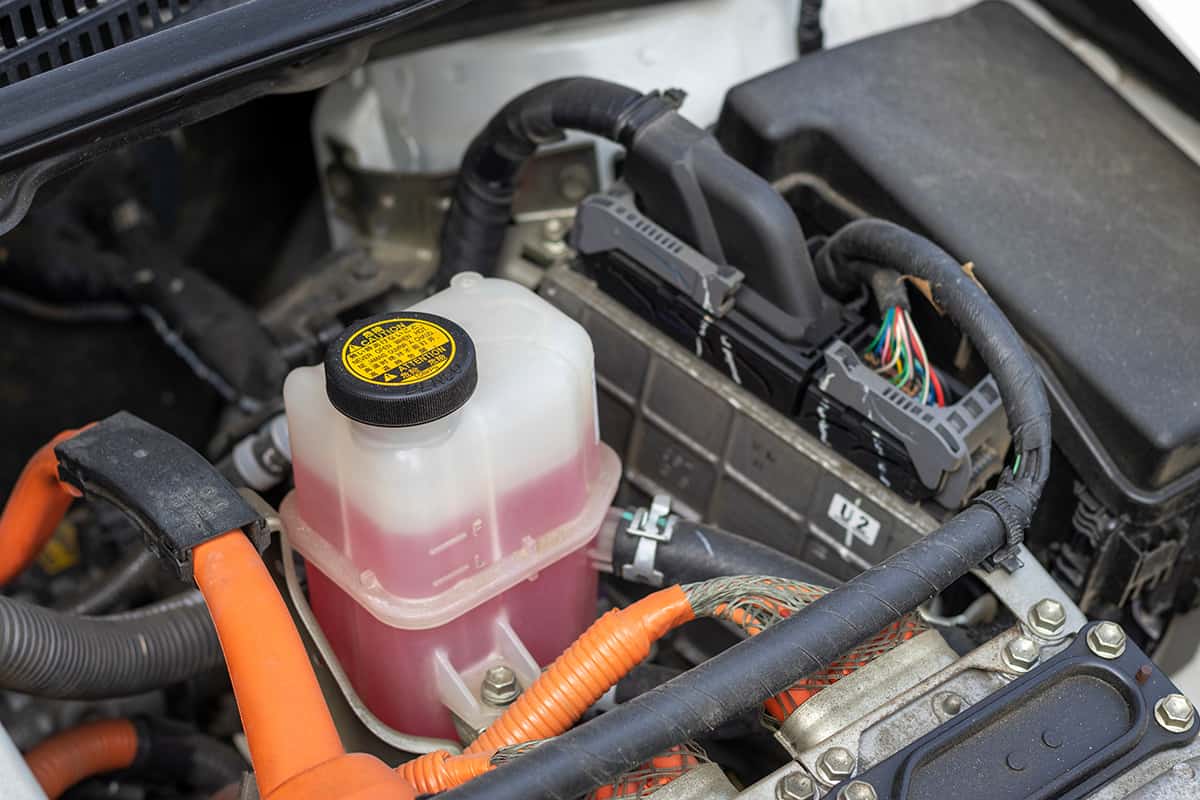A cooling system is responsible for managing heat generated by the engine’s operations. It prevents the engine from overheating, ensuring smooth rides and extended vehicle lifespan. However, the cooling system is susceptible to various issues that can affect its performance overall health of your vehicle.
The most common cooling system problems your car may encounter are as follows:
- Overheating due to low coolant levels or malfunctioning components
- Coolant leaks from damaged hoses or gaskets
- Thermostat failure leading to improper temperature control
- Radiator issues like blockages or leaks
- Water pump malfunctions
- Cooling fan breakdowns
- Blocked coolant passages obstructing the coolant flow
This article will dive deep into common cooling system problems in cars. It will explore their causes, signs, diagnosis procedures, and how to address them.
The Anatomy of a Car’s Cooling System
A car’s cooling system is an intricate network designed to manage the heat produced by the engine during operation. The primary components of a cooling system are the radiator, water pump, thermostat, coolant, cooling fans, and coolant passages, each playing a distinct role. Let’s explore each component’s function and its relationship with other parts in the system.
Primary Components and Their Functions
- Radiator: This is the cooling system’s main component. It is a type of heat exchanger designed to cool the engine coolant that circulates through it. Radiators are typically located at the car’s front to utilize the incoming air’s cooling effect while driving.
- Water Pump: Powered by the engine’s drive belt, the water pump circulates coolant throughout the system. It pushes the coolant from the radiator, through the engine, and back again, ensuring a steady flow that helps regulate the engine’s temperature.
- Thermostat: This device is crucial for controlling coolant flow based on the engine’s temperature. When the engine is cold, the thermostat remains closed, allowing the engine to warm up quickly. Once the engine reaches its optimal operating temperature, the thermostat opens to let coolant flow through the radiator and cool the engine.
- Coolant: Also known as antifreeze, coolant is a liquid that absorbs heat from the engine and transfers it to the air at the radiator. It’s specially formulated to prevent freezing in winter and boiling in summer, enabling the cooling system to function effectively year-round.
- Cooling Fans: These electric or mechanical fans help enhance airflow through the radiator, especially when the car is stationary or moving slowly. They activate when the coolant temperature rises above a certain threshold, providing additional cooling when needed.
- Coolant Passages: These are pathways within the engine block and cylinder head through which the coolant flows. They allow the coolant to absorb heat directly from the engine’s metal components, reducing their temperature.
How the Cooling System Components Work
The operation of the cooling system is a cyclical process driven by the water pump and controlled by the thermostat. When you start a cold engine, the thermostat stays closed, directing the coolant to bypass the radiator and flow back to the engine. This allows the engine to reach its operating temperature quickly.
Once the engine warms up, the thermostat opens, allowing the coolant to flow into the radiator. The water pump pushes the hot coolant through the engine’s coolant passages, where it absorbs heat. It then enters the radiator, where the incoming air and cooling fans help dissipate the heat. This cooled coolant cycles back into the engine, and the process repeats.
Common Cooling System Problems

A car’s cooling system can encounter several issues. The most common cooling system problems include overheating, coolant leaks, thermostat failure, radiator issues, water pump malfunctions, cooling fan breakdowns, and blocked coolant passages.
1. Overheating
This can occur due to low coolant levels, blocked coolant passages, malfunctioning cooling fans, or a faulty thermostat. If the temperature gauge on your dashboard shows a higher temperature than normal or a warning light comes on, it’s crucial to stop the car and let the engine cool down to prevent serious engine damage.
2. Coolant Leaks
Coolant leaks can be identified by puddles of coolant (often a bright green, pink, or yellow liquid) under the vehicle. Leaks can occur from the radiator, water pump, coolant hoses, or engine’s coolant passages. They cause a drop in coolant level, which can lead to overheating if not addressed.
3. Thermostat Failure
The thermostat controls the flow of coolant in the system. If it fails, it can stay stuck in either the open or closed position. A thermostat stuck open causes the engine to take longer to reach its optimal temperature, reducing its efficiency. On the other hand, a stuck-closed thermostat prevents the coolant from reaching the radiator, causing the engine to overheat.
4. Radiator Issues
Radiator issues include leaks, clogs, or damaged cooling fins. Leaks cause a loss of coolant, leading to overheating, while clogs prevent proper coolant flow, reducing the system’s cooling efficiency. Damaged cooling fins hinder heat dissipation from the radiator, which can also lead to overheating.
5. Water Pump Malfunctions
The water pump ensures the continuous circulation of coolant in the system. A malfunctioning water pump can leak or fail to pump coolant effectively. In either case, this disrupts the cooling system’s cycle, which can lead to engine overheating.
6. Cooling Fan Breakdowns
Cooling fans enhance the cooling effect when the vehicle is idling or moving at low speeds. If the cooling fans fail to activate when needed, the radiator may not be able to dissipate the heat from the coolant efficiently, potentially causing the engine to overheat.
7. Blocked Coolant Passages
Coolant passages in the engine or radiator can become blocked due to the accumulation of rust, scale, or sediment. This obstructs the flow of coolant, hindering its ability to absorb and dissipate heat, and can cause the engine to overheat.
How to Address Cooling System Problems
Resolving cooling system issues effectively not only extends the life of your vehicle but also enhances its performance. Here, we’ll explore how to address common cooling system problems as listed above.
1. Solutions for Overheating
Overheating is often addressed by first identifying its root cause. If the cause is low coolant, topping up the coolant to the correct level and checking for leaks usually solves the problem. If the issue stems from a malfunctioning component such as a cooling fan or thermostat, replacing the faulty part is typically necessary.
2. How to Handle Coolant Leaks
Coolant leaks need to be traced to their source. If a hose or pump is leaking, it should be replaced. If the radiator is the issue, it may be repairable, but replacement is often the best long-term solution. Always ensure the replacement coolant is the correct type for your vehicle.
3. Addressing Thermostat Failures
A faulty thermostat usually needs to be replaced. It’s essential to replace it with one that operates at the correct temperature for your specific vehicle. An incorrect thermostat can cause inefficient engine operation or further overheating.
4. Solutions for Radiator Issues
Radiator leaks or blockages may be repairable, but in many cases, replacing the radiator is the most reliable solution. Damaged cooling fins can often be straightened to improve airflow through the radiator.
5. Handling Water Pump Malfunctions
Water pump malfunctions typically require a pump replacement. Regular inspection of the water pump and its belt can help identify potential issues before they cause overheating.
6. How to Fix Cooling Fan Problems
Cooling fan issues often involve electrical circuits, so they should be checked by a professional mechanic. If the fan motor has failed, it will need to be replaced. Sometimes, the problem could be as simple as a blown fuse or a faulty temperature sensor.
7. Clearing Blocked Coolant Passages
Clearing blocked coolant passages may involve flushing the cooling system with a commercial coolant flush product. Severe blockages might require a radiator or engine teardown. It’s crucial to maintain a clean cooling system by using the right coolant and changing it at the recommended intervals.






